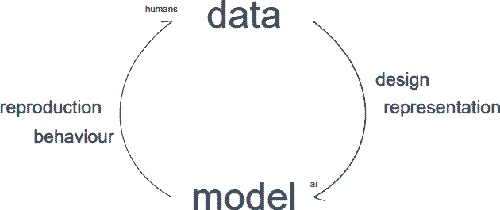A model simultaneously translates and shapes the reality it represents. Any abstracted interpretations, including diagrams, carry inherent biases due to the limitations of their form. While biased abstraction is necessary for understanding complex ecosystem entanglements, it's equally important to scrutinize the abstraction mechanisms. Whose perceptive apparatus was used? What are the model's limitations? A diagrammatic representation always reflects the political power structure of its creation. (Consider how Kodak's Shirley cards failed to accurately capture dark skin, reflecting systematic racism.) Incorporating diverse perspectives into models and diagrams is crucial to avoid perpetuating harmful power structures.
Reflecting on the notion of a "model" within ontological design, the reciprocal nature of models and reality is evident. A model not only reflects but also shapes the reality it represents, resonating with Willis' hermeneutic circle: "we appropriate [the model], modify it... and thus in appropriating [it] we also change it".* This reflects the dynamic interplay where models, while biased by their creators' perspectives and the political structures of their time, are not static. They evolve through use, influencing and being influenced by the world they are applied to, encapsulating the essence of ontological designing as an ongoing process of world-making.

* Anne-Marie Willis, "Ontological Designing – Laying the Ground," in Design Philosophy Papers, Collection Three (Ravensbourne, Queensland: Team D/E/S Publications, 2006), 80–98.
💧Model vs Diagram
💧Ecological-economic Modeling
💧More-than-human Agency